
Steve found a good spot with the sun to his back, crouched down to line up his shot, made sure his shadow was out of view, waited for his camera to focus, and before he could begin recording video…… zoom! The adorably playful cub was on the run. Steve would have to completely reset. Frustrated, he muttered under his breath.
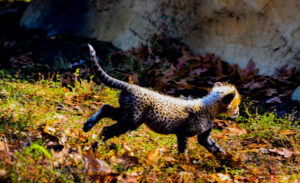
Me on the other hand? I couldn’t be happier! I had already taken over 200 pictures with an ear to ear grin on my face! We were in the habitat with three adorably rambunctious Cheetah cubs, and we were on a mission to document their story.
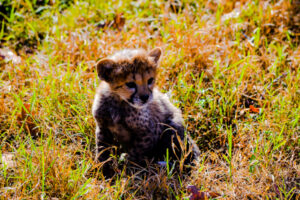
It was a cool November morning in Springfield Missouri, and we were enjoying the opportunity of a lifetime. The Dickerson Park Zoo, or the DPZ as they like to call themselves, had the honor of hand raising three brand new Cheetah cubs. As an accredited member of the Association of Zoos and Aquariums, the DPZ participates in a program called the Species Survival Plan (the SSP).

If we take a step back for a moment, this story actually starts a few weeks before. You see; a member of the DPZ Cheetah family named Babs had just carried a litter of cubs for two whole days past her due date. For most species of Animals (humans included), a few days past due would be no cause for concern.
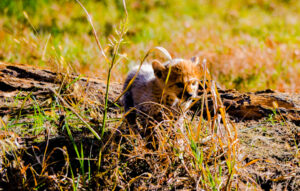
However, for Cheetah the survival rate of cubs decreases dramatically every day after their due date. According to DPZ Senior Keeper Tracy, a Cheetah’s gestation period is 95 days. At most, the Cheetah may go 96 days, but on the morning of day 98 mother-to-be Babs was showing no signs of labor!
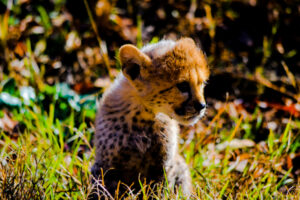
Fearing for the safety of the cubs, the DPZ staff made the decision to perform a C-section. As explained by DPZ veterinarian Dr. Stephanie Zec, or Dr. Steph for short, “It was nerve racking because it wasn’t an easy decision to make and these Cheetah cubs represent the future of the Cheetah population.”
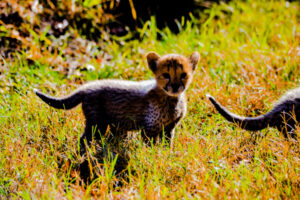
This was her first Cheetah C-section surgery, but Dr. Steph explained that as a Zoo Vet, she regularly performs procedures for the first time. Every day often brings a new adventure for her.
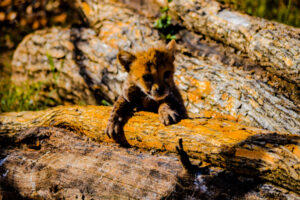
Fortunately for Babs, the cubs, and the DPZ, Dr. Steph had prepared extensively for the procedure. The Keepers were armed with Dr. Steph’s step by step guides for getting cubs to start breathing. Everyone had a clear understanding of their role during the procedure, and everything went according to plan!
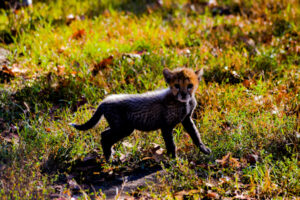
Reflecting on the procedure, Dr. Steph explained, “Truth be told, I had the easy part. My job was to safely anesthetize mom, get the cubs quickly out, and suture mom back up. The rest of the Animal care staff had the difficult job of stimulating the cubs and getting them to breathe. As soon as a baby is out, it immediately gets passed to a Keeper to warm it up and suction the fluid out of its lungs so it can breathe. The first cub came out screaming, but the next two had heart beats but weren’t breathing. It is a testament to our team that they were able to revive those cubs.”
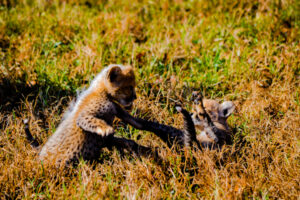
After the cubs and Babs were safely recovering, the DPZ Cheetah Care Team took on the challenge of having to hand rear the cubs. This team consisted of Dr. Steph, Keeper Tracy and Keeper Shelia. This meant ‘round the clock care and feeding of the cubs. If you find yourself asking, “why hand raise the cubs” or “why not give them back to Mom”, don’t worry. We found ourselves asking the same questions.
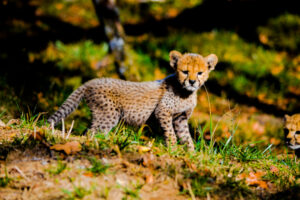
If they put the cubs back with Mom after the C-section surgery, the DPZ staff would be unable to assist or intervene if needed. “Its not like caring for a dog after she has puppies; this is a predator,” Keeper Tracy explained.
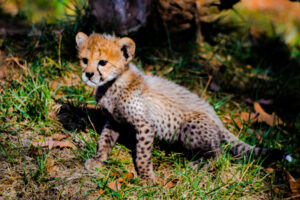
If Babs stumbled and fell on the cubs while recovering, the DPZ staff would be unable to enter the enclosure with her to assist the cubs. In the worst case scenario, Babs could be disoriented during recovery and attack the cubs. Following advice of other AZA members, like the White Oak Conservatory, the DPZ staff chose to avoid this potentially dangerous and tragic situation.
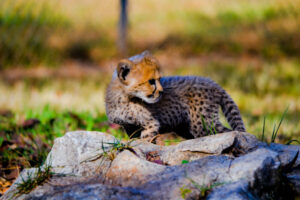
After the C-section was successful and Babs was in recovery, caring for the cubs became the primary concern. The DPZ staff took turns caring for the cubs a few evenings at a time. Dr. Steph took the first shift. She and her husband set up a nursery in their home by layering comforters, towels, and a shower curtain behind a makeshift fence.
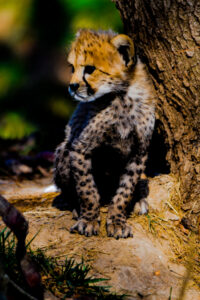
The cubs needed to be fed every 3 hours, and the cub that would later be named Art would constantly find places to wriggle through the fence and explore the house. Needless to say it was an exhausting but rewarding adventure.
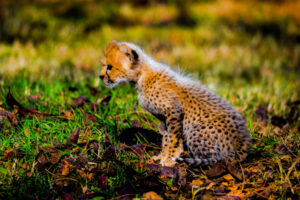
After a staff member’s shift with the Cheetah cubs was over, the cubs would go back to the DPZ during the day and get a ride to the next staff member’s home for the next few evenings. The staff members affectionately referred to these rides as “Zoober”.

As Dr. Steph had said, these cubs and others like them born in Zoos around the world represent the future of their species. Through the SSP, the Association of Zoos and Aquariums work with their members and partners to ensure that future.
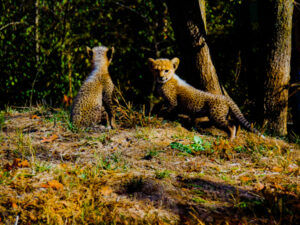
In our discussions with Keeper Tracy, we learned more about the innerworkings of the SSP. On a regular basis, SSP programs will conduct surveys of AZA facilities to determine capacity and interest for breeding of the endangered Animals within Zoos. These surveys ensure every Animal born in an AZA facility will be properly cared for throughout its entire life. Unlike the profit-driven, Animal parks you may have learned about on a streaming service, the SSP is committed to responsible growth and sustainment of endangered species. An AZA accredited facility will not intentionally allow its Animals to reproduce unless the offspring will have a future home. These surveys conducted by the SSP help to ensure this responsible growth and sustainment of the populations in Zoo care.
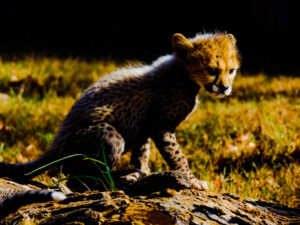
Why is this so important? Wild Cheetah populations, like many species around the world, are in a drastic decline. According to the International Union for Conservation of Nature (IUCN), there are around 7100 Cheetah living in the wild. The species is considered Vulnerable, but many experts are petitioning for Endangered status. This is a significant drop from the estimated 100,000 individuals in the 19th century as reported by the National Geographic in their article: Cheetahs: On the Brink of Extinction, Again. By 1975, a survey conduced by Norman Myers estimated the African population of Cheetah was only 15,000.
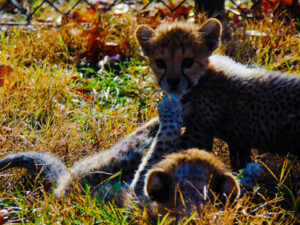
Sure, it seems like the outlook for Cheetahs is rather bleak. However, there is hope! We have interacted with enough Zoo Keepers, Veterinarians, and Staff throughout our adventures to KNOW there is hope! The passion, dedication, and teamwork of Zoos throughout this country and throughout the world gives us that hope. We know they are doing everything in their power to ensure the survival of the Cheetah and many other species in their care.
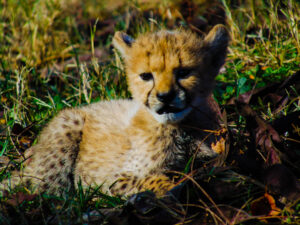
Come! See for yourself! Patron your local Zoo. Again, we’re not talking about the profit driven Animal parks you learned about while everyone was quarantined. Visit an actual Zoo. We recommend accredited members of the Association of Zoos and Aquariums, but there are other Zoos who do wonderful, responsible conservation work. We have also visited some accredited members of the Zoological Association of America we can recommend as well. Go patron those facilities, and see for yourself. When you do, something wonderful happens! You become an active participant in their conservation efforts by simply patroning and supporting that Zoo! This was our Zoo Adventure, and it was easily one of our favorites. Now, we implore you! Go! Have a Zoo Adventure too!